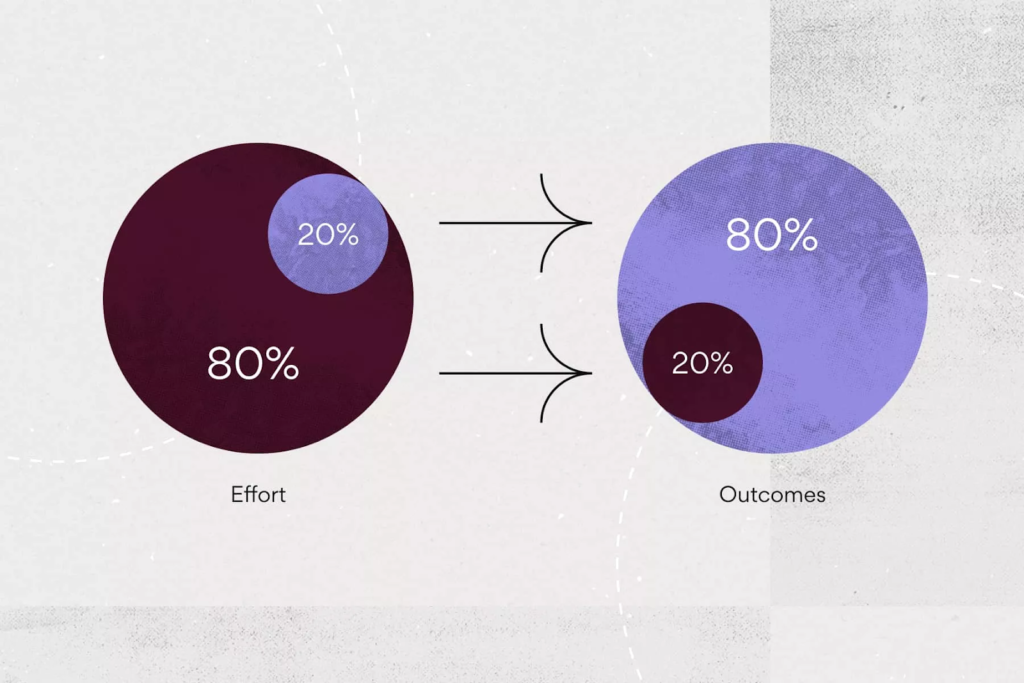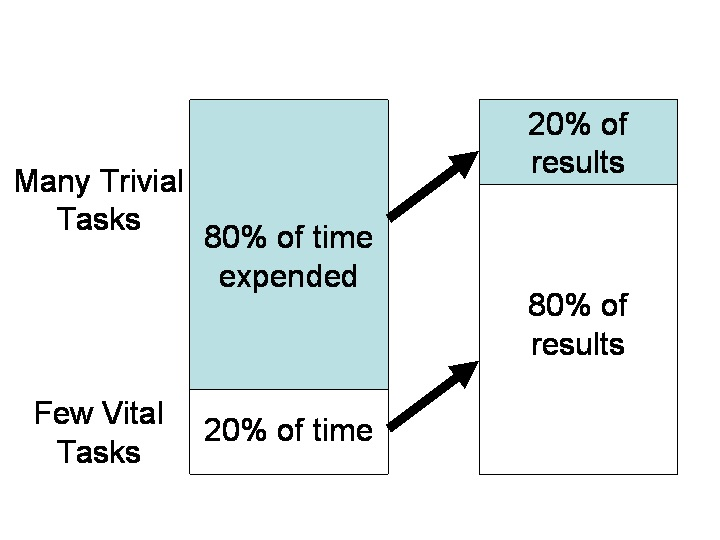Pareto Principle In SEO: How To Achieve SEO Success With 80/20 Rule

Pareto Principle, famously known as the 80/20 rule, claims that 80% of our outcomes result from 20% of our inputs. But how is it applied in the world of marketing, and more specifically, in the world of search engine optimization (SEO)? Consider this — if you know 20% of pages that bring you 80% of traffic, you can optimize SEO on these pages to optimize and maximize your outputs. This is just one example of how this principle can work in SEO.
The Pareto 80 20 rule is one of the most efficient ways to achieve your SEO goals. Continue reading to understand the 80 20 theory of SEO and how you can apply it to optimize page rankings.
What is the Pareto Principle in SEO?

According to Italian sociologist and economist Vilfredo Pareto, 20% of causes are enough to generate 80% of consequences. For SEO, this means you have to identify and concentrate your efforts on 20% of elements that can improve your SEO by 80%. Remember that 20% and 80% are ballpark estimates and are not meant to be taken at face value.
The Pareto 80/20 rule in SEO requires two sets of data. It analyzes outputs for a given set of inputs. These two sets of data can be two variables with an established relationship. Some examples of these inputs and outputs could be the following:
- Input: Content; Output: Organic search traffic — 20% of your content is generating 80% organic search traffic
- Input: Followers; Output: Retweets
- Input: Landing pages; Output: Bounce rate
So, look for 20% of on-site SEO actions that can generate the maximum returns for you. On-site SEO is the visible elements of a website and optimizing them for search engines. It helps the search engine (and your audience) understand what your website is about. For example, which 20% of your blogs are generating 80% of the traffic?
To leverage this principle, toss out the elements on your website until only those 20% of elements remain that produce 80% results.
How to Apply Pareto Principle to SEO?
Follow these steps once you’ve identified the elements that bring the most traffic to your website:
- Start by identifying your goal and CTA. This is part of the 20% inputs you will put.
- List all the elements on your site that don’t pertain to this goal or CTA. These are the 80% of things that you can do without.
- Now, don’t focus on this 80% of elements. It might sound shocking and overwhelming, and you’d be like, what! But it works, as we’ll explain later.
- Now, focus only on those 20% elements and analyze your data. Are the changes effective? Experiment with different variants; try A–B testing.
- Continue tweaking the design of your site until those 20% elements you identified are emphasized.

Here’s a detailed example of using the Pareto rule on an important element — key pages. We’ll see how to identify key pages, optimize them, and measure the impact of optimization.
Example of Using the Pareto Principle
Identify key pages on your website
Key pages are most likely to drive the majority of your traffic and conversions and, therefore, should be a priority for your SEO efforts. One of the best ways to identify these pages is by analyzing your website’s traffic data. This data can be found in your website’s analytics tools, such as Google Analytics. Here are some metrics you should look for:
- Pageviews
- Bounce rate (percentage of visitors who leave your website after only viewing one page)
- Conversion rate (percentage of visitors who take a specific action on your website)
You can also use tools such as SEMrush or Ahrefs to see which pages on your website are getting the most backlinks. This could indicate that those pages are important to your audience and worth investing in.
Optimize the key pages
This will help you improve the visibility and ranking of your website in search engine results. Some of the most common on-page optimization techniques include:
- Using relevant keywords in the page’s content and meta tags
- Optimizing the page’s title tag and meta description
- Optimizing the page’s header tags (H1, H2, H3)
- Improving the page’s load speed and mobile-friendliness
- Optimizing images and videos on the page
- Creating internal links between the pages of your website
For example, optimizing a web page’s title tag and meta description means including relevant keywords that describe the page’s content. Doing this will clear the intent of your blog to readers and improve their chances of clicking on it.
Measure the impact of optimization
This will help you understand how your website is performing and identify areas for improvement. One of the most effective ways to do this is by using analytics tools such as Google Analytics. It provides valuable information about your website’s traffic, including the number of visitors, the pages they visit, and how long they stay on your site.
Additionally, you can track changes in your website’s rankings using tools like Ahrefs, SEMrush, or Moz.
Go back to the metrics you shortlisted in the first step — conversion rate, bounce rate, and pageviews. By tracking changes in your website’s traffic, rankings, and conversions over time, you can identify which optimization efforts are working and which ones need to be improved.
The Pareto principle, also known as the 80–20 rule, can be a powerful tool for optimizing your website for search engines. Use the Pareto rule to identify what’s working and do more of it. And to figure out what’s not working and do less of it.
Remember that these efforts would be for naught if you don’t have enough great content. Focus on creating great, engaging content, and you’ve already won half the battle.
FAQs
Instead of focusing on a whole spreadsheet worth of keywords, focus on those 20% niche keywords driving 80% of your traffic. Here’s how to figure this out:
1. Do keyword research and list keywords highly relevant to your business.
2. Do competitor research and analyze which keywords are already working.
3. Use Google Analytics or other analytics tools to figure out the keywords already working for your website. Choose only the top keywords.
4. Now you have a list of top keywords — from this list, pick 20% of keywords responsible for the most traffic. If the traffic decreases, move to other keywords from this list.
The Pareto principle in marketing suggests that 80% of a company’s sales come from 20% of its customers. Therefore, if a company wants to increase its sales, it should focus on the customers most likely to drive most of its revenue rather than trying to appeal to every customer.
Consider the following example of the Pareto 80–20 rule — 20% of hours of the day generate 80% of conversions. How can one identify this 20% of hours? Analyze your website performance by the hour and identify when your website traffic is maximum. You can find such data in tools like AdWords or Google Analytics. You can then optimize the website performance in two ways:
1. Run Google ads in the hours when the traffic is maximum to boost traffic even more. Decrease the money in hours when the traffic is not good.
2. Run two campaigns for your best hour and one for the rest of the day.
Latest Blogs
Explore how Google’s 2025 AI search updates triggered ranking chaos. Learn actionable strategies to adapt your SEO for AI Overviews, zero-click searches, and SERP volatility. Stay ahead now.
Learn how to rank on AI search engines like ChatGPT, Perplexity, and Gemini by optimizing your content for authority, structure, and relevance. Stay ahead in AI-driven search with this strategic guide.
Explore the best healthcare SEO services for your medical practice. Improve online visibility and effectively reach more patients in need of your services.
Get your hands on the latest news!
Similar Posts

Content Analytics
8 mins read
Google I/O 2025: AI Search Shake-Up & Ranking Volatility

SEO
5 mins read
Top 10 Agencies for Banking and Financial SEO Services Industry

SEO
4 mins read